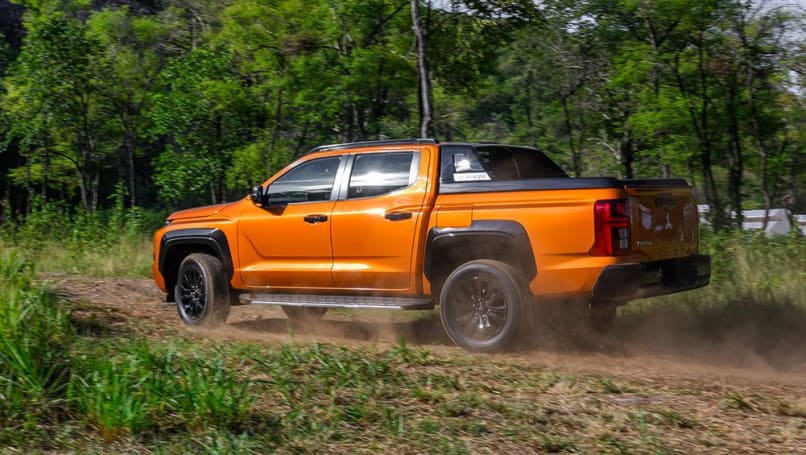
Iconic US car brand doubles down on Australia: 2026 Cadillac Optiq and Vistiq electric SUVs coming to rival BMW iX3 and Volvo EX90
Cadillac likes its chances in the Australian market. Before commencing...
Browse over 9,000 car reviews

Mitsubishi’s incoming new-generation Triton faces a dilemma. After years as the affordable Japanese-badged workhorse option when stacked up against the increasingly expensive HiLux, Ranger and D-Max, the version which arrives in 2024 is promised to come with a price-hike.
Speaking to media at its unveiling in Thailand, Mitsubishi Australia’s Managing Director, Shaun Westcott, made no mystery of this when asked if the Triton would maintain a similar pricing structure.
“It will be more expensive,” he said. “Similar to Outlander, we have significantly improved the quality and price of the vehicle. There is more value, and more spec, and there will be a price-up.”
For reference, the current outgoing Triton, which will continue to be available until late 2023 or very early 2024, starts from $30,740 before on-road costs for a GLX 4x2 cab chassis, stretching to $56,940 for the top-spec GSR 4x4 dual-cab.
The problem is, an increase in price could push buyers toward the Triton’s much more affordable and increasingly popular rivals, like the GWM Ute or LDV T60 out of China, or even the SsangYong Musso out of South Korea.
Westcott was not fazed by this, saying the new Triton would speak for itself when coming up against these challengers.
“We’re not playing the price game anymore, we’re not a low-cost producer of cars, we believe we are undermining the value of our Japanese craftsmanship by playing as a low-cost brand,” he said.

“Volume without profit is vanity. We don’t have the benefit that some other manufacturers of the world have, with significant government support in various forms.
“We are a private company, we stand on our own, and we need to make a profit. We believe the value is there in our cars, the technology is there in our cars. When you look at the safety of the new Triton, its performance and durability, the fact that we’re not afraid to offer a 10-year warranty.
“We’re confident of the quality of our cars and we don’t think anything of that calibre and quality should have to chase volume based on low cost.”
Westcott was also confident that the new truck would be able to justify a higher price, despite not offering a V6 like the new Ranger or Amarok, a larger engine capacity like the D-Max, or a long-promised hybrid system.

“We do believe that firstly - it addresses our core market and their needs. It’s a big step up from the last one and what you haven’t seen yet is the spec list where we’ve made comparisons to competitors, and in quite a few areas we have the technology and size which is a benefit over those competitors,” he said.
“Safety tech is standard across the range - we believe that will be class leading.
“I think it’s going to stack up. The current Triton is consistently third place in the market, and this [incoming] vehicle is significantly improved from the current Triton. It’s also at the end of its life and cost, to some degree, mitigates the age of the vehicle. Over the last two or three years, the price of Triton has been rising not as much as competitors, and we’ve been able to sustain those prices.
“If you look at what we achieved with Outlander, we think we can sustain that higher price in the market.”

Westcott also confirmed the safety suite would come standard on the Triton range at launch and didn’t rule out both single-turbo and cab-chassis versions coming in underneath the launch range of 4x4s, and also made a point of the brand expanding the range upward in the future.
“I believe there is some opportunity above GSR,” he said, and when queried on whether that might look like the Walkinshaw-tuned Xtreme, he indicated it was certainly a possibility.
“Walkinshaw isn’t in partnership with us - they developed [the Xtreme] on their own - we think it’s a good idea,” he said. “Whether we do it ourselves or in a partnership [for the new Triton]? Those are the things currently in discussion with our parent company.”
For a hint to what that might look like, Mitsubishi has made no secret that it plans to resurrect the Ralliart badge for production vehicles and has promised in the past that it will live up to the performance promise which comes with it.
Comments